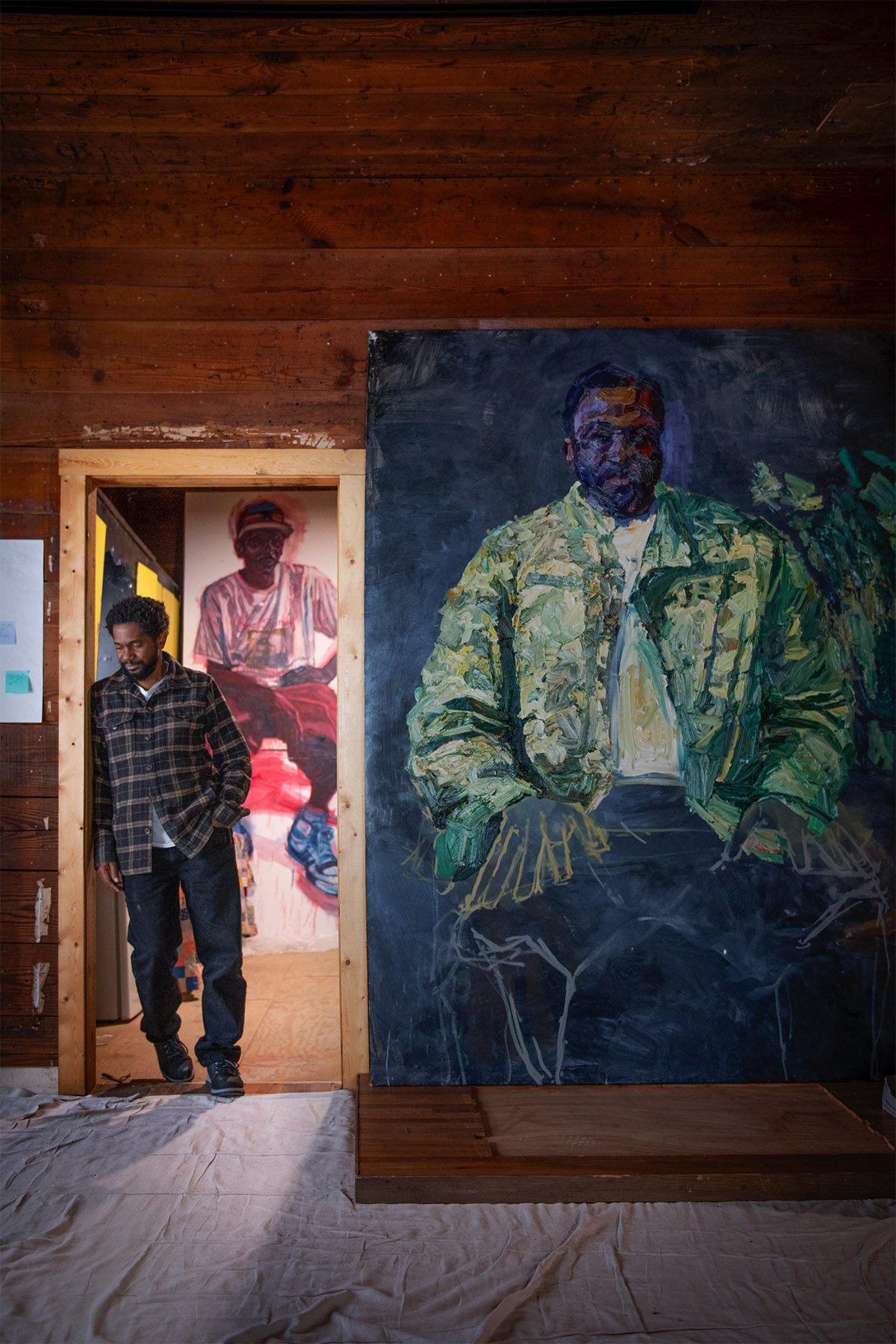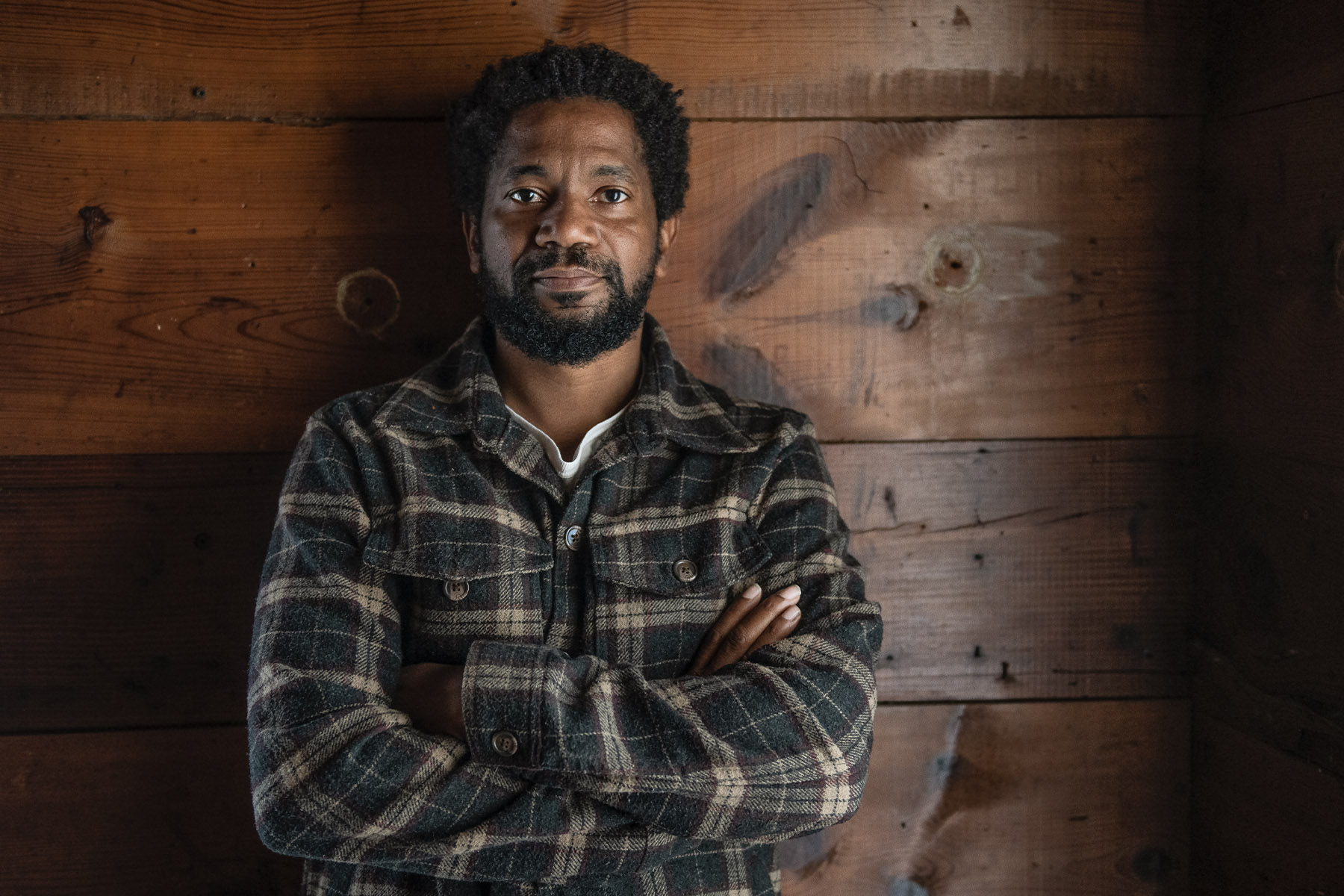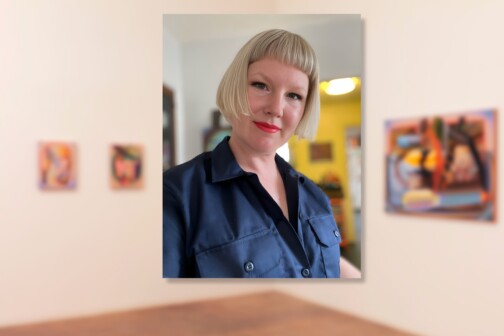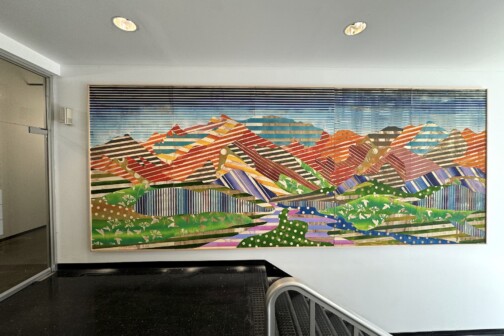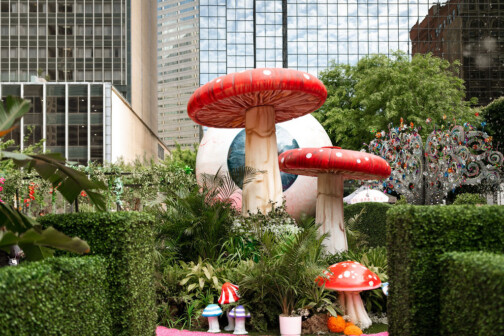Set on 1.5 acres in Fort Worth’s historic Polytechnic Heights neighborhood—once home to Manchester Cotton Mills and still home to Texas Wesleyan University—is a century-old house that has been stripped down to bare wood floors, walls, and siding. There’s little furniture, just a maze of mostly empty rooms. But this isn’t because it’s being sold or undergoing renovations. It’s a community-based experiment in collaborative art.
Kinfolk House was founded by internationally known artists Letitia and Sedrick Huckaby in the bungalow once owned by Sedrick’s grandmother, Big Momma. When she was alive, her house was filled with rooster-themed decor, clusters of ceramic knickknacks, and family photos. By the time the Huckabys bought it after her death, the house was in sore need of repair.
When Kinfolk House opens this month, the renovated and reimagined space will serve as a shared gallery, performance hall, and educational center for the surrounding community. In the first year, the Huckabys plan to host three collaborative art projects by local and national artists of diverse disciplines—dance, theater, music, poetry, sculpture, and more. Programming such as artist talks, workshops, and school tours will be developed around each project. “What we want to do is draw in the surrounding community and make them feel like they have ownership in this space,” Letitia says.
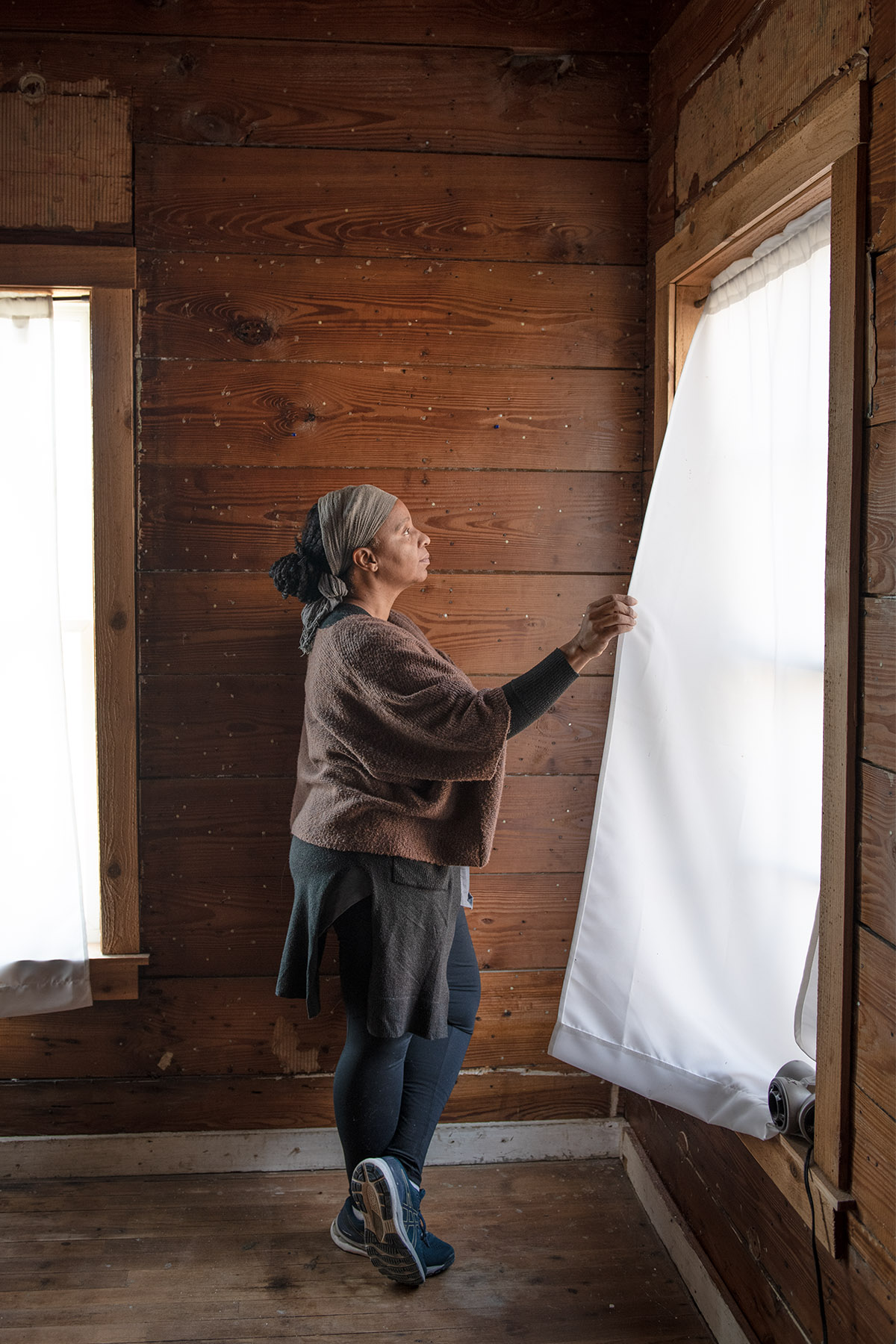
While Letitia is best known for photography and Sedrick for painting, both artists pursue projects that explore Black family, culture, and history. Kinfolk House, then, will be their biggest artistic undertaking yet. Because at Sedrick’s grandmother’s old home, they want to inextricably weave the three together.
Sedrick grew up in Fort Worth, where his participation in art programs resulted in an apprenticeship with painter Ron Tomlinson, the two of them working together in the back rooms of the Modern Art Museum of Fort Worth. After high school, he attended Texas Wesleyan, Boston University, and Yale before traveling through Europe on a grant to study the old masters.
“All that time away, I was making art about Fort Worth, but always in other places,” Sedrick says. “At some point, it didn’t seem right. I always thought I would come here and work on projects about home, and, once I got done, I was going to New York. After being here for a while, I started to realize that I’m a part of this community, part of something larger.”
Letitia’s passion for photography began as a teen in Oklahoma. After getting a journalism degree at the University of Oklahoma, she received her BFA in photography at the Art Institute of Boston.
But she arrived in Boston just as Sedrick was leaving, so the two wouldn’t meet until he returned home to Fort Worth. Letitia, too, had just moved to the area, where she was working on photography projects for Fort Worth ISD. The district’s art director, Beverly Fletcher, helped connect the two. They eventually married and now have three kids (Rising Sun, 16; Halle Lujah, 13; and Rhema Rain, 5).
After teaming up, Letitia and Sedrick kept bolstering their respective résumés. Letitia earned her MFA in photography from UNT in 2010, participated in the Tallgrass Artist Residency in Kansas, and showed her work at the LSU Museum of Art in Baton Rouge, McNay Art Museum in San Antonio, and 108 Contemporary in Tulsa. Sedrick has been teaching at UTA, after receiving a Guggenheim Fellowship in 2008. He was named the Texas State Artist in 2018 and was a finalist for the 2019 Outwin Boochever Competition Exhibition administered by the Smithsonian National Portrait Gallery. He even had a stint teaching painting to former President George W. Bush.
Throughout it all, the couple has continued to look for new ways to explore Black heritage through their evolving concept of art. Sedrick believed that it shouldn’t be limited to exhibitions. Art could be an installation, a performance, something experiential with context and meaning. He had a piece in “Sustenance,” a 2010 group show of site-specific installations that took over a derelict industrial building since swallowed up by the Trinity Groves development.
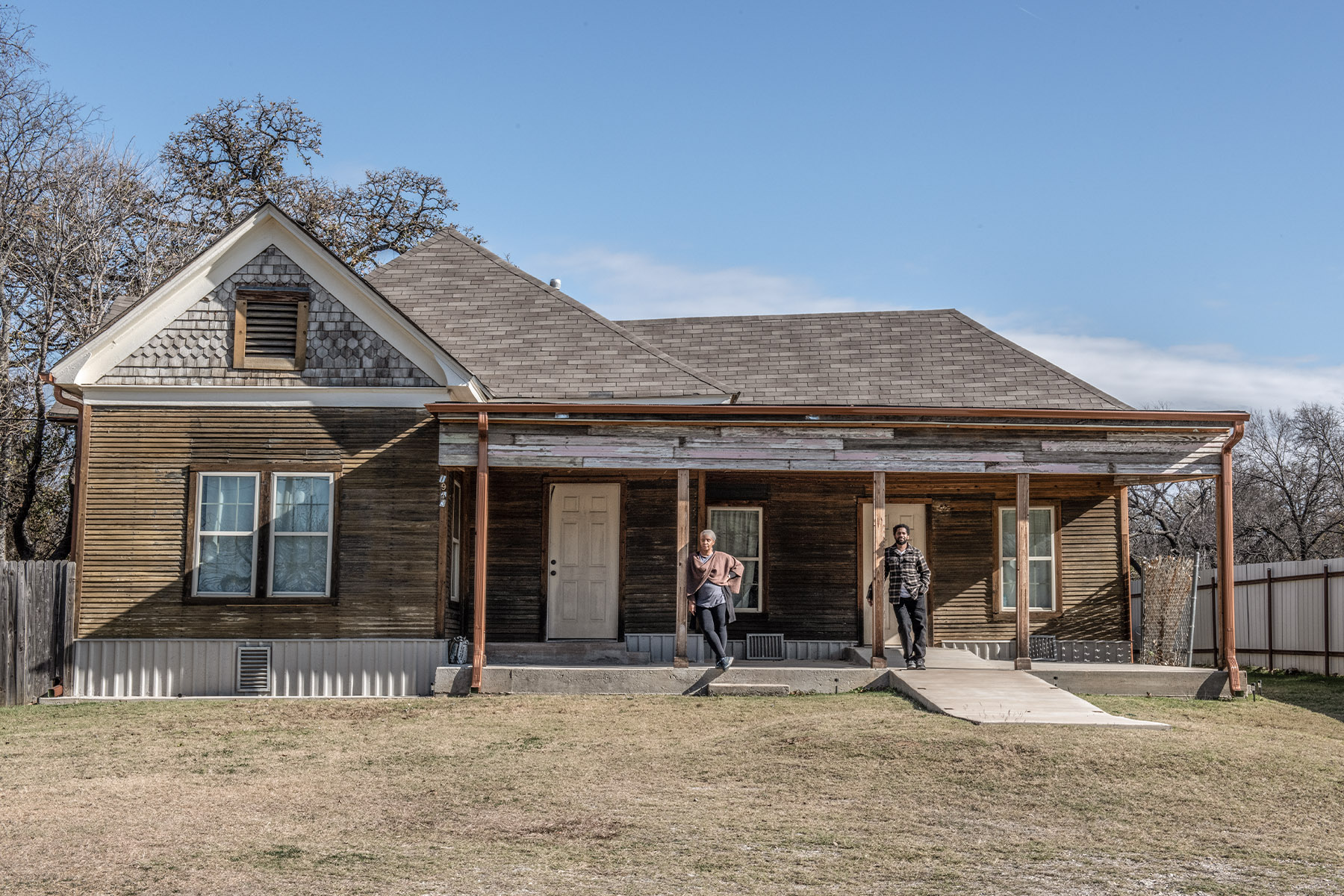

Art could, he eventually decided, be a house.
“In my mind, a house can be a living, breathing, moving work of art that changes over time,” he says. And that’s what Sedrick saw in his grandmother’s dilapidated house: art in the making.
Hallie Beatrice Carpenter, better known as Big Momma, moved to the Fort Worth area as a child from Weimar, Texas, an hour and a half southeast of Austin. Her creativity, Sedrick says, wasn’t expressed through traditional art media but through human interactions. “She was creative more culturally and socially speaking,” he says, “because she was able to create an environment where different types of people would feel comfortable being together.”
Letitia experienced the gracious, warm, and inviting atmosphere firsthand. “It felt a lot like going to visit my own grandmother,” she says. “This was the kind of space where you know the family doesn’t have a lot, but what they have they want to share and give.”
There’s little furniture, just a maze of mostly empty rooms. But this isn’t because it’s being sold or undergoing renovations. It’s a community-based experiment in collaborative art.
For a few years as a child, Sedrick attended S.S. Dillow Elementary School, located a few blocks from his grandmother’s house. Every day after school, he and his cousins would jump the back fence and spend time there until his mother picked him up after work. They weren’t the only guests.
“This was a place where everybody—from a church-going person to a someone who loved the club—felt welcome and like they could come, so they would,” Sedrick says.
A few years after Big Momma passed, in 2008, Sedrick bought the house from family members. He knew he wanted to do something creative with it, but he wasn’t sure what. Recalling a conversation with artist Arthello Beck, the first African American to own and operate an art gallery in Dallas, led him in the right direction.
“When I was young, Arthello said, ‘Sedrick, we’re going to have to tell our stories. Don’t expect everybody else to tell our story. It’s up to you, it’s up to me, to keep history and to tell the story of our lives.’ I was challenged with that. I thought about how as an artist to honor Big Momma’s legacy, the creativity she left, and the beauty she spread in the community and family. That’s where the house came into the picture.”
At the outset, Letitia wasn’t convinced. “I didn’t initially want to buy the house, but Sedrick could see the vision of it,” she says. “It was in pretty bad shape, and a lot of money had to be put into it. The more he started to talk with me about it and include me in choices, it started to become more our thing. That got me excited.”
In many ways, the house helped to fund its own transformation. Sedrick had previously completed a successful series of portraits of his grandmother at home. “After she passed away, I did another group of works where I painted the empty rooms in the house,” he says. “As those pieces sold [through Valley House Gallery], I was reinvesting the money into the house.”
To determine the best way to make use of the house, the Huckabys looked for other examples of houses used as art spaces. One was Project Row Houses, the creation of seven Black artists (under the leadership of Rick Lowe) who turned a block and a half of derelict shotgun houses in Houston’s Third Ward into the core of a larger artistic community.

“If you go in a convenience shop, the clerk will ask, ‘Have you seen the show at Project Row Houses?’ ” Letitia says. “It’s not what you would have expected from a community that doesn’t normally go to galleries or museums. The community has really taken ownership of that space, and that’s what we would like to see happen with Kinfolk.”
The same could be said of another gallery closer to home, that of Tarrant County College art professor Dr. Eddie McAnthony’s Multicultural Studio and Art Gallery. “When Dr. McAnthony was a younger artist, the gallery system wasn’t accepting of his art,” Sedrick says. “He had to open his own gallery in an old house on Berry Hill. He showed his work and found a number of other up-and-coming Black artists he could show at his house.”
Berry Hill in Fort Worth, like Big Momma’s Polytechnic Heights neighborhood, is historically Black, which was significant to the gallery’s success. “His ambition was to set this gallery in the Black community and to do it so well that people would come from all over to see it,” Sedrick says. “It’s easy for people to go to the galleries when they’re in the Arts District, but if people travel to the hood to see these shows, it must mean there’s something exceptional going on.”
Because serving Polytechnic Heights’ Black and Latino residents is a priority for the Huckabys, the couple hired Jessica Fuentes, an artist and advocate, as Kinfolk House’s director to develop programming and link the space with the community. “The biggest concern is making sure the community feels welcome,” Sedrick says. “If that doesn’t happen—it could be this great success, but it’s not a success to me until they come.”
Kinfolk House’s grand opening is planned for early March and will feature a joint show by Sedrick and Letitia. Sedrick has been working on a series of massive, wall-size portraits of family members, including several cousins and an aunt. Letitia will be examining “the Black presence and aesthetic in the landscape” through photographs related to Big Momma’s past. To do this, she took a trip to Big Momma’s birthplace, Weimar.
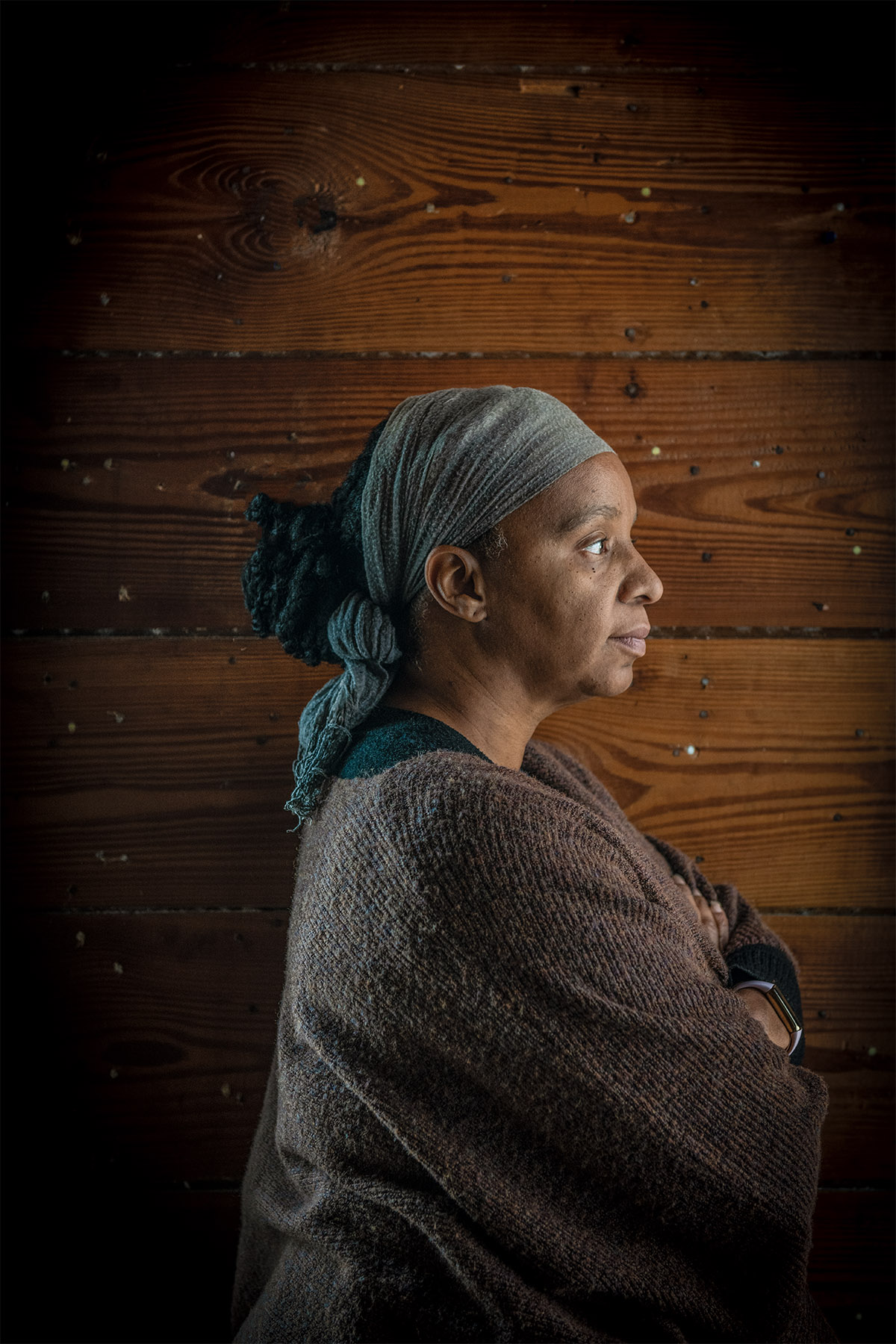
“I don’t know exactly where she lived, so it’s like a poetic representation of where she spent the first 10 years of her life,” Letitia says. “I took this exodus, if you will, from that area back up to Fort Worth, taking pictures.” The resulting photographs will be printed on fabric and surrounded by embroidered lyrics from a recording of Big Momma singing a gospel song, which will play in the background.
When Kinfolk House opens, it will be one of the few Black- and artist-owned art spaces in the North Texas area, thereby breaking the mold of privilege and class that exists in mainstream art institutions, which historically have neither uplifted Black and brown artists nor connected with their communities.
The biggest concern is making sure the community feels welcome. If that doesn’t happen—it could be this great success, but it’s not a success to me until they come.
“I hope that it’ll be a bridge where people come, and, as they learn more, they may feel more comfortable going to places like the Amon Carter [Museum of American Art],” Sedrick says. “Maybe the Amon Carter can come, and they’ll feel more comfortable with everyday people.”
“It’s why ‘kinfolk,’ the word itself, is so important,” Letitia adds. “It ties to a culture, a relationship, and family, and that’s the kind of influence we want to have in the community and the art world at large.”
While the Huckabys hope the Polytechnic Heights community finds inspiration and connection to the art created in Kinfolk House, they believe it has the capacity to do something equally important: help visitors see the greatness of this Fort Worth neighborhood.
“There’s so much originality and beauty of people, history, and things that exist right here in Poly already,” Sedrick says. “Sometimes that beauty has to be framed.”


